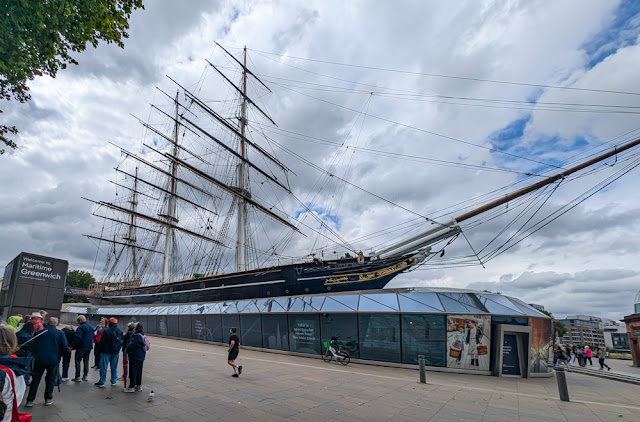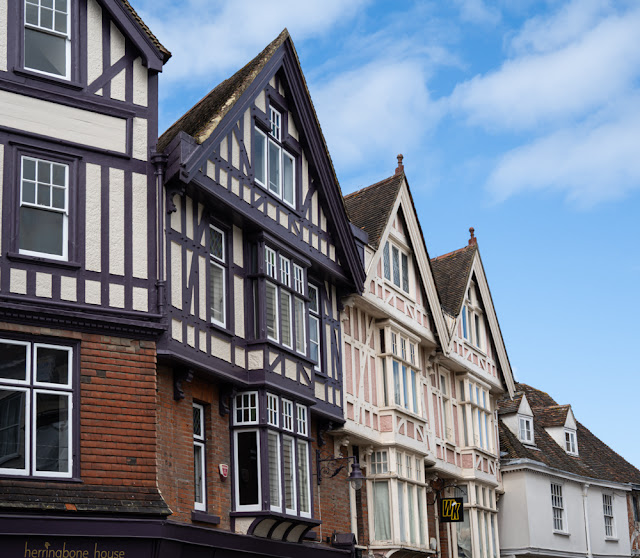I set the alarm for 5:00 AM, but I was up at 4:30. After a quick shower and shave, I went for my first cup of coffee while Kay did her thing. We then completed getting our carry-on luggage packed and we met in the Atrium at 7:30. On time, we left the ship by the ferry tender and made our way to a large tent where our luggage was arranged by color codes. We quickly found our luggage and were soon on a coach with about 30 other passengers who all had early morning fights from Heathrow Airport.
Although it was only 25 miles, the early London traffic made the trip almost 2 hours. Once at the airport the check-in procedure was smooth. Viking had included first class airfare. We had requested Delta and Michelle, our travel agent, was able to coax Viking into a direct flight with Delta One status. This provided us with expedited check-in and access to The Virgin Airline/Delta Lounge. We even had a private elevator to the lounge.
The lounge was much more comfortable (not to mention the good food and beverages provided) than the mass seating at Heathrow. Heathrow doesn't open the seating areas for the gate until about 30 minutes prior to boarding; thus, you are forced to sit in a huge common area with hundreds (or thousands) of other flyers until your flight is called.
The lounge was NICE.
Although there was a delay in the start of boarding, boarding was very fast, and takeoff was on time.
They are predicting the flight to be shorter than expected! I am not unhappy about that.
In this photo, taken shortly after takeoff, you can see the River Thames on the right side and farther up the river, on the left side past the island is the beginning of the Royal Botanical Gardens.
On the left center may be seen the Twickenham Stadium (Allianz Stadium), a rugby union stadium in Twickenham. It is owned by the Rugby Football Union (RFU), the English rugby union governing body, which has its headquarters there. The stadium is England's national rugby union stadium and is the venue for the England national rugby union team's home matches.
As advertised, it was a quicker than expected flight. We had a strong tailwind for the first few hours and then a stiff headwind as we neared the North America coastline.
I just love the Geo Tracker phone app. This is the route we flew.

It worked perfectly fine during the flight. I would periodically check the speed and altitude against the plane's display. The airspeed on my app was 3 mph higher than the speed shown on the planes screen. The altitude was off a maximum of 300 feet. That was when the plane was at 36,000 feet. This is not a significant difference.
The statistics were interesting as well; the duration is incorrect because I started tracking while on the coach on the way to the airport. The distance is also inaccurate because I moved the phone to my pocket a couple of times without thinking and it lost the GPS coordinates. Overall, it is an amazing free app. I have found it useful for finding my way around unfamiliar streets as well as hiking in the woods. It doesn't need any network or WIFI connection to operate.
We touched down around 5:00 PM and after a long taxi to the gate, we entered the trek to customs. The lines were long, but it only took 15-20 minutes to clear without any difficulty. The upside to that was our luggage had already been taken off the conveyer and was easily located. Our Top Hat driver, Tommy, had already texted me that he was in the staging area, so I texted him after we acquired our luggage and he picked us up about 5 minutes later. I didn't notice the time, but I expect it was around 7:15 when we got home. Unpacking can wait until tomorrow; it's sleep I want now.
Trip Summary:
Although we have done a number of long cruises (30 day or more) and one 114-day world cruise, this was the first ocean cruise we have done since covid. We did do a two-week cruise around the UK when we did our Scottland trip in 2022. I mention this because I’m not entirely sure what changes the industry has undergone post-pandemic, but I suspect there have been many.
This was also our first time sailing with Viking, a line promoted as “luxury,” whereas our prior cruises were predominantly with Holland America, which is generally considered “premium.” I was eager to see how Viking would compare.
In some respects, Viking excelled. The ship was impeccably maintained; during our cruise, they replaced the hallway carpet and repainted our veranda. On my early morning walks, I noticed a diligent crew handling cleaning and maintenance tasks before most passengers were awake.
The enrichment speakers were a highlight, especially during the sea days crossing the Pacific. The quality and variety of lectures were excellent, and the cabin stewards and dining staff we interacted with daily were top-notch. However, I did find it frustrating that Viking frequently rotated waitstaff. Just as we were getting to know a waiter, they would be reassigned, disrupting the continuity of service. In contrast, on our previous Holland America cruises, we typically had the same staff for the entire voyage, which fostered a more personal connection.
This pattern of rotation extended beyond the dining staff: during our segment, we had two captains, two cruise directors, and two hotel managers. Such turnover disrupted the sense of continuity and routine, which is especially noticeable on longer cruises.
Another difference was the segmented nature of the voyage. On past world cruises, most passengers embarked for the entire journey, allowing camaraderie to develop. This time, there was a constant flow of passengers joining and leaving at various ports, making the experience feel less cohesive.
For context, while Viking is marketed as a luxury line with higher entry-level pricing, it does include more in the fare-such as complimentary excursions, beer and wine at meals, and Wi-Fi. Our Viking promotional fare also included first-class airfare and their Signature beverage package as well as shipboard gratuities, this was not an insignificant perk. Holland America offers a wider range of ship sizes, more destinations, and typically more consistent staffing throughout longer voyages. Viking’s ships are newer and have a Scandinavian design, while Holland America’s ships tend to have a more traditional feel (which I personally prefer) and offer more onboard activities and entertainment options. Both lines cater to adults and emphasize enrichment, but the overall atmosphere and operational approach differ in ways that may or may not suit every traveler’s preference.
I recognize that comparing Viking in 2025 to Holland America in 2017 may not be entirely fair, as both lines-and the industry as a whole-have likely changed. Still, I didn’t find the Viking experience to be truly “luxury.” It wasn’t a bad cruise, just not outstanding.
I apologize for not being as through or providing as much context with my postings for this trip, I just sometimes felt it more of a chore than a joy to write. Does this mean my thrill of travel is declining? I hope not!
Until next time... May your travels be filled with good memories, great experiences and many adventures.




























































